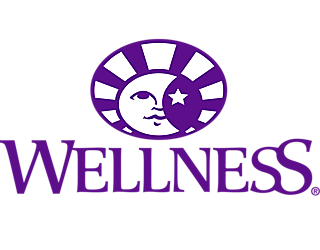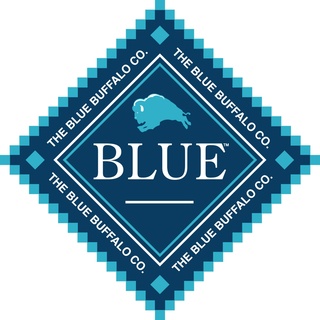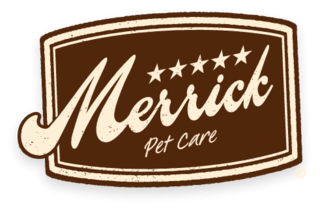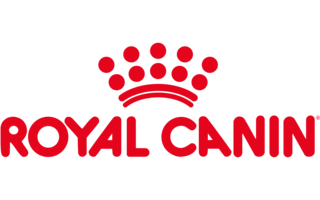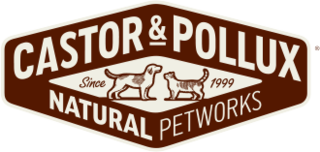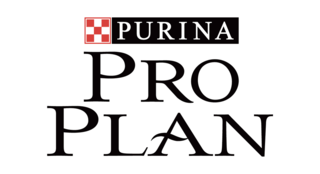Best Dog Food of 2024
Finding the best and safest food for your dog can be a daunting task — especially if your dog suffers from allergies or any kind of health condition.
Read on for our reviews of the best dog food in the market, and guidelines that can help you determine the best food for your dog’s particular needs.
Our Top Picks for Dog Food
- Wellness - Best Dog Food Brand Overall
- Blue Buffalo Life Protection - Best Dry Dog Food
- Merrick Canned Dog Food - Best Wet Dog Food
- Royal Canin Veterinary Diet - Best Prescription Dog Food
- Castor and Pollux Organix - Best Grain-Free Dog Food
- Purina Pro Plan - Best Budget Dog Food
- Other dog food brands we considered
- Wide range of options for different breeds, ages and diets
- Use whole meats as main source of protein
- Low to no use of known fillers such as corn
- Comply with AAFCO standards and keep consumers updated on requirements
- More expensive than similar brands
Why we chose Wellness: Wellness’ use of high-quality ingredients and broad range of options make it a reliable brand regardless of your dog’s breed or dietary restrictions.
Wellness is a well-regarded pet food brand that uses top-quality ingredients in its wide range of products. It has four main lines, with a variety of formulas for different ages and sizes.
Also, while it’s well known for its grain-free options, Wellness also provides what it calls “wholesome grain” alternatives. These mainly use brown rice and oats and skip well-known fillers such as corn.
The CORE line is probably the most popular, and it has three different subcategories: Digestive Health, RawRev and the original high-protein line. There’s even a vegetarian (not vegan) option made with plant-based ingredients and eggs.
The company complies with all AAFCO requirements, and its labeling according to age and nutritional requirements for growth are accurate. It also updates its labels and information regularly to keep up with AAFCO standards.
While it has had some recalls, the brand has been known to solve issues quickly.
From puppy to senior dog food, limited ingredient and even vegetarian options, Wellness is a well-rounded brand that offers high-quality products for any dog.
- Available in most pet stores
- More affordable than similar quality brands
- Uses whole meats as main source of protein
- Not as high in protein as other options
Why we chose Blue Buffalo: Blue Buffalo’s wide availability and high-quality protein sources make it a great option for anybody looking to upgrade their dog’s diet.
Blue Buffalo’s Life Protection line provides whole sources of protein as main ingredients and a broad selection of recipes for all types of dogs.
The Life Protection line comes in a wide variety of flavors: beef, lamb, chicken and fish, typically accompanied by brown rice and, in some cases, oatmeal.
Blue Buffalo delivers when it comes to quality protein — its first ingredient is always deboned meat. A second ingredient is always a meat meal concentrate to provide extra protein. This meal is usually made up of chicken or fish even on the beef and lamb recipes, so keep that in mind if your dog has any food allergies or sensitivities.
Blue Buffalo’s Life Protection line is simple and dependable, following all of AAFCO’s standards for nutrition and development. While this particular line isn’t very high in protein, Blue Buffalo’s other lines, such as Wilderness and Basics Limited Ingredients offer grain-free, high-protein options for dogs that need it, such as large working dogs. These are also easily accessible and found at a reasonable price.
- Large variety of recipes
- Easily accessible
- No canned dog food recalls in at least 10 years
- Pricier than some competitors
Why we chose Merrick: Merrick is an easy-to-find brand that prioritizes whole sources of protein and skips the artificial flavors and preservatives.
Merrick is a well-known brand that can be easily found at pet stores across the country. It uses whole meat as a main protein source and has little to no artificial additives that could diminish the food’s nutritional value.
The brand offers food for most stages of life, meeting AAFCO standards for growth (puppies) and maintenance (adults).
There is a large variety of meat options, including beef, duck, chicken, turkey, salmon and more, as well as a wide assortment of recipes that has something to offer for even the really picky eaters.. Limited ingredients options are available too for dogs who have dietary restrictions.
While the brand prioritizes grain-free recipes that use ingredients such as potatoes, carrots and peas, there are also recipes with grains such as brown rice.
- Designed and prescribed for very specific conditions
- Many options for different ailments and in different serving styles
- Can only be bought with prescription
- Expensive
Why we chose Royal Canin Veterinary Diet: Veterinary-recommended, with recipes designed to treat specific health concerns, Royal Canin has a prescription option for almost anything your dog is struggling with.
Royal Canin is one of the most widely recommended brands, prescribed by veterinarians for a vast array of health issues.
The Veterinary Diet line is highly regarded for its large lineup of foods meant to treat common health concerns in dogs. From food sensitivities to renal and digestive issues, your dog’s doctor has options to choose from to help out your pet.
Royal Canin complies with the AAFCO nutrition guidelines and it’s very transparent with the ingredients, feeding guidelines and caloric content of the food.
Keep in mind, however, that because the foods are aimed at treating specific health conditions, it usually features a wide array of ingredients (as opposed to formulas aimed at dogs with allergies, which tend to have limited ingredients). The brand also often uses “meals” and different types of concentrates to provide the necessary nutrients, along with many ingredients used for medical purposes, such as oils, supplements and vitamins.
- All organic ingredients
- No recalls in over ten years
- Not as easy to find as competitors
- Fewer options in the lineup
Why we chose Castor and Pollux Organix: Castor and Pollux uses whole, organic ingredients in every Organix recipe, making it a high-quality option for any dog owner.
If you’re looking for a recipe with all-natural ingredients and little to no fillers, Castor and Pollux may be the brand for you. The Organix product line has all organic and responsibly sourced ingredients. They use, for example, free-range chickens and grass-fed beef.
The grain-free alternatives use health substitutes — such as organic sweet potato and potatoes — and provide a healthy proportion of carbs without sacrificing the higher-than-average protein content grain-free is known for. They also forego any artificial preservatives and coloring.
The company complies with the AAFCO standards, and also with the rigorous USDA requirements to classify as organic. No recalls have been made in the past decade.
Castor and Pollux’s options may be limited in comparison to larger brands, but its quality more than makes up for it.
Although the brand’s options are highly rated, grain-free diets in general have been at the center of some controversies. Always consult your veterinarian before changing your dog’s food. If you find that the change is not the best, Castor and Pollux also provides grained alternatives in its Organix lineup.
- Available in most pet stores and supermarkets
- Very budget friendly
- Use whole sources of protein as main ingredient
- Lower than average carb content
- Foods in the Vet Diet line have been recalled in the last two years
Why we chose Purina Pro Plan: Purina Pro Plan’s nutrient profile and use of whole named meats and carbs make it a solid option for dog owners on a tight budget.
Purina is undoubtedly one of the most recognized and widely available brands of dog food. And, while it’s known for its low prices, its wide range of products also includes high-quality food. Its Pro Plan line is probably the best example.
Unlike other lines in the brand’s catalog, Pro Plan uses whole protein and carb sources as the main ingredients instead of “by-products”, which includes only a limited amount of the advertised meat.
Purina complies with all AAFCO standards and regulations, and the standard Pro Plan line has only been recalled once in the last decade. Products on the Pro Plan Vet Diet line,however, have been recalled in 2022 and 2023 due to mislabeling and excess of Vitamin D.
At around $1.84 per pound, the Pro Plan line is a great choice for pet owners on a tight budget who don’t want to sacrifice their dog’s nutrition. If this is still too high, Purina’s ONE line is around $1.57 per pound and still uses whole named meats as the first ingredient.
Other Dog Food Brands We Considered
Hill’s Science Diet
Hill’s Science Diet prides itself on “biology-based nutrition” and has a wide variety of products for different health concerns. Its Perfect Digestion and Sensitive Skin and Stomach lines are well-regarded for digestive issues and they have some of the best dog food for urinary health. However, there are some ingredient concerns, especially low protein content.
- Veterinary recommended for certain health issues
- Budget friendly
- Low protein content
- Some recalls as recent as 2019
Holistic Select
Not to be confused with a holistic approach to dog nutrition, Holistic Select offers a healthy range of options with high-quality ingredients. However, a large number of “meat meal” recipes and a lower-than-average fat and carb content knocked it off our main list.
- High protein content
- No recalls recorded
- Low carb and fat content
- Expensive
Canidae
Canidae has great options for those looking for limited ingredients, grain-free and organic alternatives. The Under the Sun grain-free line, for example, is very high on carbs, which is rare in grain-free recipes.
- Recipes with limited ingredients
- No recalls since manufacturing in-house
- Responsibly sourced options
- Pure line is very expensive at over $3.00 per pound
Simply Nourish
Simply Nourish, generally, has a very well-balanced nutrient profile composed of high quality ingredients. It does tend to have lower levels of fat — something to keep in mind if your dog tends to be underweight. The brand’s dry food also provides excellent value at under $1.62 per pound.
- Whole named meats and whole grains
- Excellent value at under $1.62 per pound for dry food
- Low fat content
- Recalls in 2021 due to excess of vitamin D
Dog Food Guide
There are many factors to consider when you’re trying to find the best possible nutrition for your dog — from its specific breed to the ingredients that make up each kind of kibble.
Dog food versus human food
Dogs are technically omnivores and their nutritional needs don’t differ that much from us. However, while they might be okay if they eat the occasional piece of ham slipped under the table, they require very specific nutrients to help them grow, develop and live long, healthy lives. Dog food has been researched and meticulously formulated in order to fulfill those needs.
There are also several foods that they can’t tolerate or digest well and that are regular parts of a human diet, for example chocolate, grapes or garlic. Dog food is already designed with all this in mind, taking much of the stress of understanding it off pet owners.
The standards for nutrients are established by The Association of American Feed Control Officials (AAFCO). This association creates optimum nutrient profiles and pet food label outlines. While they don’t have the power to regulate or enforce these standards, most reputable pet food brands will follow their guidelines, and some states and organizations use these standards when making regulatory decisions. Owners should always check for AAFCO approved labeling and recipes.
Types of dog food
Most dog food diets will promise healthier skin, better digestion and more energy. However, while some of these claims are based on research, some are based on speculation or simply how much dogs enjoy eating a particular food.
The reality is that every dog is different, and the only way to know what’s best for yours is to pay attention to how your dog does on the food you give it, understand the benefits and pitfalls of each diet and, most importantly, consult a veterinarian.
Here are some of the most common types of food and diets available:
Kibble/dry food
Dry kibble is the most common type of dog food out there, and it includes many of the ingredient-based categories mentioned here. Dry food is, as its name suggests, food with very low water content. It can be meat-based, grain-free, made for small dogs, large dogs, etc.
Some of the benefits of dry dog food include its long shelf life, which can also result in long-term savings, and how it helps your dog’s dental health thanks to the chewing.
However, there are some drawbacks, such as the low water content (although less of a problem for dogs than cats) and the possibility of it not being as tasty as other options. Buying a huge, 40-pound bag of dry kibble only to have your dog smell it and walk away will most likely eliminate the saving money aspect, so be sure to buy a small bag first for your pet to try.
Semi-moist/canned food
Wet dog food (or canned food) is composed of protein, fat and carbohydrates just like dry food, although normally lower in carbs. It adds a vitamin-heavy gravy or broth that provides most of the moisture. While its nutritional value is fairly similar to dry food counterparts (it will depend mainly on the recipe, of course), there are some benefits to wet food.
First and foremost, wet food tends to be significantly more appetizing than dry food. If your pet is eating less than usual, using wet food is usually an easy fix. Second, its high water content can help keep your dog hydrated. This makes it easier on their digestive system, too, so it could help with stomach issues.
However, wet food tends to be much more expensive than dry food in the long run. Also, once opened, it won’t last long, so be sure to buy the right size can for your pets’ weight and keep any leftover food in the fridge and tightly covered.
Grain-free
Grain free dog food excludes all grains such as rice, oats or corn. While mostly protein based, it’s not only made up of protein, as carbohydrates are still an essential part of every dog’s nutrition. The grains are typically replaced with starches, like potatoes or other vegetables.
This food is often recommended for dogs with grain intolerances. It’s also helpful if you’d like to avoid feeding your dog excessive amounts of grains — which are sometimes used as fillers with low nutritional value — if you find they’re impacting its digestion. Some of the alleged benefits of grain-free diets include healthier skin and coat and less risk of allergies.
However, there are some drawbacks to grain-free food. First, you should be aware of what carbohydrate substitutes are used, in case they’re also detrimental to your pet. Second, there has been a lot of controversy behind grain-free foods, as they have been linked to canine dilated cardiomyopathy.
While this link is still in dispute, it’s best to consult your vet before you drastically change your dog’s diet, including to or from grain-free.
Raw food
A raw diet is composed of uncooked meat, bone and vegetables. It can be fresh food from a supermarket or it can be bought specifically for dogs in dehydrated or frozen form as prepared by different dog food manufacturers. There are also a number of supplements and additives made from raw ingredients used to add to your regular dog food.
This diet started becoming popular in the 1990s and stems from the idea that dogs should eat what they ate before they were domesticated thousands of years ago.
Some of the benefits cited by raw food proponents are similar to those cited for almost every other type of diet, such as a shinier coat and healthier teeth. However, there’s a lot of controversy behind this diet as its claims haven’t been backed by solid research and many veterinarians disagree with the approach.
When it comes to raw food diets, there are two frequent concerns. One is the risk of an unbalanced diet, as owners will usually prepare meals themselves. The other is the possibility of both dogs and humans being exposed to raw meat bacteria, something the FDA is especially concerned about.
If you’re thinking about feeding your dog a raw diet, we urge you to do the necessary research and consult your veterinarian to arrange the proper meals.
Vegan and vegetarian dog food
Unlike cats, who are true carnivores, dogs’ diet and digestive characteristics classify them more as omnivores. This means they can benefit from a wide variety of foods, including vegetables. However, much like their feline counterparts, their need for protein is fairly high, as well as the need for other nutrients found mostly in animal meat.
This makes vegan and vegetarian diets for dogs a controversial subject. While some veterinary nutrition experts say that it’s possible for certain dogs to benefit from a vegan or vegetarian diet, the diet has to be carefully and expertly designed in order to meet that particular dog’s needs.
Additionally, vets who recommend vegan or vegetarian diets for dogs usually do so when there’s an urgent need for it, due to allergies, intolerances, obesity or other conditions that make the dog unable to have meat protein.
So, while your pooch might enjoy veggies now and then, owners interested in transitioning their dog to a vegan diet should make sure to consult with a canine nutritional expert that can advise them in creating a healthy diet for their particular pet.
How to find the best dog food
Regardless of the diet you choose for your dog, finding the right brand or food is still a challenge. There’s no easy way of knowing which is truly the best recipe or what will make your pet’s coat shinier. Additionally, as we all know, some dogs can get picky during meal time. Nevertheless, here are some ways you can make sure the food you buy is top quality, safe and has a high probability of fulfilling their promises.
Understand your own dog’s nutritional needs
Most dog food found in stores contains a balanced profile of all the nutrients dogs need. However, every dog is different and it’s important to understand the ingredients they might be averse to, what they simply like or dislike, or what nutrients they might be lacking.
First, get informed about your dog’s breed, size and possible hereditary conditions.
Second, always pay close attention to their habits and physical appearance, as this might give you information about how their nutrition is going. Observing them is the best way to catch any symptoms of allergies or intolerances before they become bigger problems.
Finally, always contact a veterinarian to better understand the effects certain foods or ingredients can have on your pet. By having a full profile of your dog’s needs, you’ll be better equipped to choose the type of diet.
Here are some of the factors to consider when choosing food:
Age. Developing puppies need different nutrients than adult dogs, and puppy food is designed with growth in mind. The same goes for older dogs. While the AAFCO has no specific requirements for senior dogs, certain conditions might arise with age, such as joint pain or digestive problems, and owners should always talk to their vets and see if these issues can be alleviated through a change in diet.
Size. Different sized breeds have different nutritional requirements. A small breed, for example, requires more calories in a smaller portion as their metabolism tends to be faster than large breeds, but, of course, their stomachs are still tiny. Larger breeds don’t need as much calorie density, but do, for example, need a bit of a push in calcium to develop stronger joints to hold their weight.
Breed. When it comes to breeds, the most important aspects are the size and common health issues associated with each breed. However, this does not mean that you need to underfeed your Labrador because of how common it is for them to be overweight. Each dog is different, so pay attention to your pet’s specific needs and concerns, and always consult your veterinarian.
Allergies. Just like humans, dogs can be allergic to certain foods or nutrients. If you notice things like rashes or hair loss, talk to your vet about what could be the cause.
Stomach sensitivity. If your buddy is having issues when going to the bathroom, they might be reacting to something in the food. There are many foods out there for a sensitive stomach, but make sure you find out what’s the cause first.
Understand dog food labels
When looking for the best dog food, it’s important to understand what’s truly in it and where it comes from. Just like in many industries, companies will use specific language in order to paint their ingredients and formulas in the best possible light. However, there are still certain standards set by the FDA and the AAFCO that need to be followed and can help buyers identify the ingredients and the quality.
- Always make sure that the food is clearly identified for dogs and subcategorized by age, size, breed or the specific issues it addresses.
- Look for the words “complete and balanced” somewhere in the packaging. These words mean that the recipe complies with an AAFCO nutritional profile and/or has passed an AAFCO feeding trial.
- Identify the ingredients and its quantities according to the percentage rules set by the AAFCO. If the packaging says “Chicken Food” or “Beef Food for Dogs”, it means that the formula is supposed to be, at least, 95% chicken (excluding water). If it says “Lamb Dinner” (interchangeable with words such as “entrée” or “formula”), it must be composed of, at least, 25% lamb (excluding water).
- Read the ingredient list. The list is written in order of percentage. The first step is to make sure the advertised protein is the first on the list. Also look for fillers or ingredients that your dog may be allergic or sensitive to. Remember that “Chicken Formula” can mean that there are other proteins included, so if your dog is allergic to beef, for example, it’s important to double check even if the biggest word in the bag is chicken.
For a more detailed understanding of how to interpret dog food labels, consult the FDA website.
Talk to your veterinarian
Before you decide on a particular dog food brand, it’s important to take your pet for regular check-ups and talk to your veterinarian about its particular needs. This is especially important if your pet has any type of health condition or is a senior dog (seven years or more).
For example, you might find foods specifically designed for senior dogs, but the AAFCO doesn’t have a nutrient profile for elderly dogs. Your senior pet might need something not even found in these recipes that caters to a particular problem. Older dogs are more susceptible to certain diseases or conditions, such as weaker joints or skin issues. There may be food that can help alleviate the problem your dog is having (and you may even be able to get pet insurance scverage for it). In order to find out which recipe would be best, make sure to consult with a veterinarian.
Talking to your vet before you choose your dog’s food is also important if your dog is over or underweight. Before buying formulas aimed at weight loss (or weight gain), make sure you get to the root cause of your dog’s weight issue.
Best Dog Food FAQ
How to make dog food
What is chicken meal in dog food?
What is the healthiest dog food?
How much food do I feed my dog?
First, it’s important to know what your dog’s healthy weight is by checking with your vet. If they’re overweight, your vet should be able to help you come up with a nutritional plan.
Once you choose the appropriate food, make sure to read the charts printed on the bag or can that show the appropriate cup measurement according to weight. It can range from less than a cup for toy breeds to over five cups for giant dogs like Saint Bernards or Great Danes.What is the best dog food for puppies?
What are the best dog foods for senior dogs?
How We Chose the Best Dog Food
In order to find the best dog food among so many options, we took a look at the following factors:
Product lines. We looked at a brand’s options for different ages, sizes, breeds and health concerns to see if consumers could find what they were looking for, regardless of their dog’s circumstances.
Ingredients. We read through the ingredients list, comparing them to label standards set by the FDA and AAFCO, and third-party ingredient analysis.
Recalls. We searched the recalls for each brand (and each product specifically) during the past decade to gauge not only the quality of the products, but a company’s transparency and its approach to solving the issues.
Price. We calculated prices per pound or ounce and compared them with competing products in the same category (grain-free with grain-free, for example) to determine their value. Naturally, recipes with whole meats versus recipes with meat meals may be costlier, but could offer higher value.
Summary of Money’s Best Dog Food of 2024
- Wellness - Best Dog Food Brand Overall
- Blue Buffalo Life Protection - Best Dry Dog Food
- Merrick Canned Dog Food - Best Wet Dog Food
- Royal Canin Veterinary Diet - Best Prescription Dog Food
- Castor and Pollux Organix - Best Grain-Free Dog Food
- Purina Pro Plan - Best Budget Dog Food
- Other dog food brands we considered





